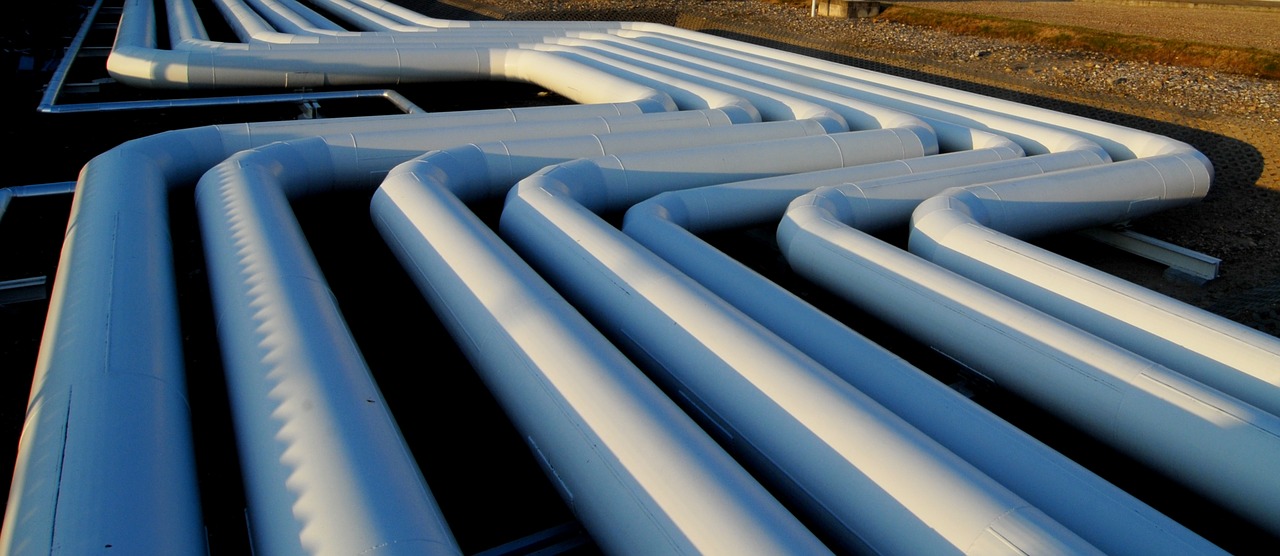What Is Pipe Bending?
Pipe bending, or tube bending, is one of the basic machining processes that even people in the industry sometimes take for granted. By definition, pipe bending is considered any metal forming process used to form pipes or tubes permanently. This machining procedure can be a form-bound or freeform-bending process.
After a pipe has been fabricated, it usually has to undergo post-fabrication operations to be formed into a usable product. Bending is one of the most widespread of these procedures. It can be performed either manually or by computer-controlled pipe bending machines through either cold or hot forming methodology. Pipe bending is a processing technique used in various metal forming processes to increase plumbing fixtures’ fabrication competencies. The pipe can be bent in different directions and at varying angles.
Subject to the particular bending procedure used, the starting material’s mechanical and physical properties can be altered. The most simple curve can turn the pipe at an angle of 90 degrees forming an elbow, but pipe bending machines offer many more options and variables. Besides, pipe bending could be done in a couple of other geometries that include 2D and 3D dimensions.
Pipe Bending Processes
The pipe bending process begins with loading a pipe or a tube into a pipe bending machine and clamping it into place among two dies – the clamping block and the forming die. Two other dies loosely hold the pipe itself – the pressure die, and the wiper die.
The pipe bending procedure includes using mechanical force to push stock pipe or tubing against a die, forcing the pipe or tube to adjust to the die’s shape. Usually, the stock pipe is held in place while its end is rotated and rolled around the machine’s die. Different pipe processing forms include pushing the stock pipe through rollers that bend it into a simple curve. For multiple pipe bending processes, a mandrel is placed inside the tube to prevent collapsing. The pipe is held in tension by a wiper die to impede any damage during stress. The wiper die is generally made out of softer materials like aluminum or brass to avoid damaging or scratching the material being bent.
Pipe bending machines can be human-powered, hydraulic-assisted, hydraulic-driven, pneumatic-powered, or could operate with electric servomotor. The pipe bending processes include press bending, rotary draw bending, roll bending, and induction bending.
Industrial Applications Of The Technique
Pipe and tube bending are vital for a wide variety of industries. They are excessively used in everything from the automotive industry to aviation, shipbuilding, aerospace, oil and gas, etc. The automotive sector heavily relies on mandrel bending machines to minimize thin wall tubing’s ovality when it’s bent. Modern-day pipe bending machines can help eliminate wrinkles on the inside radius of the bend too.
Two other industries that rely on top-quality pipe bending are the aerospace and aviation industries. Within these two industries, bends need to be 100% precise since there is no room for error. In aerospace, it’s especially essential to produce curves with pinpoint accuracy.
From processing pipes to structural accents, various bent-metal products provide high-performance results and withstand the most challenging industrial and commercial environments. Corporate giants from multiple industrial sectors work with third party pipe, tube, and profile bending companies to secure fast turnarounds, tight tolerances, and guaranteed quality control.
From curved tubes and pipe elbows to complex angle-bending projects, the industries utilize this machining technique to produce:
- Structural steel bending and rolling
- Offshore and petrochemical equipment
- Bent metals for playground equipment
- Bent metals for fitness equipment
- HVAC and refrigeration pipes, tubes, and other metal components
- Transportation equipment
- Agricultural equipment
- Pneumatic conveying systems
- Ductwork for processing plants
- Tanks and steel vessel supports
- Street lamps and signage
- Construction and architectural accents
- Various furniture components
For many years now, pipes and profiles-bending machines that are digitally controlled satisfy the highest technical performance capabilities and quality requirements. The pipe bending process is used in practically all segments of the metalworking industry.
Here are the top four sectors that employ the pipe-bending processing technique.
Aerospace Industry
One of the most critical challenges in the aerospace industry is to create durable and strong bends that exceed standard industry specifications. Aerospace companies utilize various profile-bending machines to produce hydraulic lines, exhaust systems, engine tubes, seat frames, and fuel lines.
Automotive Industry
From different interior components to cranking fuel lines, automotive precision bending requires utmost accuracy and repeatability to meet automotive manufacturers’ high-volume demands. Automotive bending needs are continuously changing as complex exhaust components and systems permanently need to evolve and fit into smaller and tighter places for the production of modern-day supercars.
To achieve the exact bends required, typically on small radius tubing with shrinking material thickness, mechanical engineers usually employ a process called boost bending. Boost bending is a procedure where the material gets pushed into the tools while the bend is being performed. Boost bending helps ensure accurate and precise bending without a pipe or profile breakage. This bending type plays a vital role in solutions for automotive applications for the creation of automotive exhaust systems, brake and fuel lines, seat frames, structural components, and coolant systems.
Heavy Truck Industry
In the heavy truck industry, small and precise radius bends are often performed on difficult-to-bend tubing and piping materials like 409 and 304 stainless steel. These materials can be bent only through a high-quality bending machine because they require high strength large tubing. Pipe and profile bending machines are used to manufacture heavy truck fuel lines, engine tubes, many structural components, and other custom fabrications.
Shipbuilding Industry
There is a comprehensive list of bending services and solutions used in the shipbuilding industry, from small vessels to commercial ships. The machining processing technique is utilized to create hydraulic lines, exhaust systems, fuel lines, and water lines.
Final Words
When the normal 90-degree elbows don’t work within your system design or space requirements, bent pipes, tubes, and profiles are a fantastic routing option. With a profound understanding of the term, the process, and its industrial applications, now you know that it’s pretty straightforward to find a solution for pipes, tubes, and profiles of all sizes.







